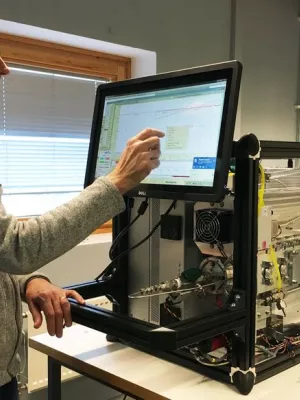
Erik Swietlicki
Professor

Wear particles generated from studded tires and pavement induces inflammatory reactions in mouse macrophage cells
Author
Summary, in English
Health risks associated with exposure to airborne particulate matter (PM) have been shown epidemiologically as well as experimentally, pointing to both respiratory and cardiovascular effects. These health risks are of increasing concern in society, and to protect public health, a clarification of the toxic properties of particles from different sources is of importance. Lately, wear particles generated from traffic have been recognized as a major contributing source to the overall particle load, especially in the Nordic countries where studded tires are used. The aim of this study was to further investigate and compare the ability to induce inflammatory mediators of different traffic-related wear particles collected from an urban street, a subway station, and studded tire-pavement wear. Inflammatory effects were measured as induction of nitric oxide (NO), IL-6, TNF-alpha, arachidonic acid (AA), and lipid peroxidation after exposure of the murine macrophage like cell line RAW 264.7. In addition, the redox potential of the particles was measured in a cell-free system. The results show that all particles tested induce IL-6, TNF-alpha, and NO, and those from the urban street were the most potent ones. In contrast, particles collected from a subway station were most potent to induce lipid peroxidation, AA release, and formation of ROS. Particles from studded tire-pavement wear, generated using a road simulator, were able to induce inflammatory cytokines, NO, lipid peroxidation, and ROS formation. Interestingly, particles generated from pavement containing granite as the main stone material were more potent than those generated from pavement containing quartzite as the main stone material.
Department/s
- Ergonomics and Aerosol Technology
- Nuclear physics
Publishing year
2007
Language
English
Pages
937-946
Publication/Series
Chemical Research in Toxicology
Volume
20
Issue
6
Document type
Journal article
Publisher
The American Chemical Society (ACS)
Topic
- Pharmacology and Toxicology
Status
Published
ISBN/ISSN/Other
- ISSN: 1520-5010